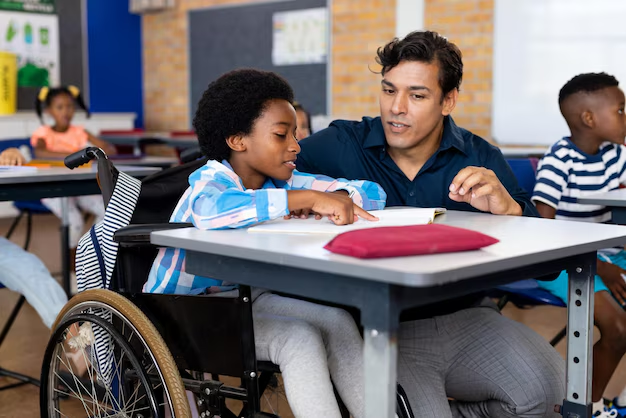Many parents and tutors wonder, what is IEP Learning Disability? and how it impacts a child’s education. An Individualized Education Program (IEP) is designed to support students with learning disabilities, ensuring they receive personalized instruction, accommodations, and necessary services in their educational environment. However, misconceptions often surround IEPs, leading to confusion about their purpose and benefits.
This blog breaks down the Individualized Education Program (IEP) process, clears up common myths, and gives you the clarity you need to advocate confidently for your child.
What is an IEP Learning Disability?
An Individualized Education Program (IEP) is a legally binding document that outlines a student’s unique learning needs, goals, and support services within their educational environment. It ensures that students with learning disabilities receive the right modifications and accommodations to help them succeed alongside their peers.
IEPs are developed collaboratively by teachers, parents, special education professionals, and sometimes the student. This team works together to create a plan that aligns with the child’s strengths, challenges, and learning style.
Common Misconceptions About IEPs and Learning Disabilities
1. IEPs Are Only for Students with Severe Disabilities
One of the biggest misconceptions about IEP learning disabilities is that only students with severe conditions qualify. In reality, IEPs support a wide range of learning challenges, from mild to severe, ensuring that students receive the help they need to succeed.
2. Students with IEPs Are Placed in Special Education Classrooms
Many believe that having an IEP means a student will be removed from general education classes. However, under the Least Restrictive Environment (LRE) principle, most students with IEPs remain in inclusive classrooms and receive additional support, such as modified assignments or specialized teaching strategies.
3. IEPs Lower Academic Expectations
A common myth is that students with IEPs are not held to the same academic standards as their peers. In reality, IEPs do not lower expectations—they provide the necessary accommodations (such as extra time on tests or assistive technology) to help students meet standard academic goals in a way that suits their learning needs.
Facts About IEPs and Learning Disabilities
1. IEPs Are Legally Enforceable
Schools and educational institutions are legally required to implement an IEP once it is approved. Parents have the right to request meetings, modifications, and legal action if the IEP is not being properly followed.
2. Parental Involvement is Essential
Parents play a critical role in the IEP learning disability process. They have the right to:
- Attend IEP meetings
- Suggest changes to the plan
- Advocate for their child’s needs
Active parental involvement helps ensure the IEP remains aligned with the child’s best interests.
3. IEPs Are Fully Customized
Each IEP learning disability plan is unique and specifically tailored to the child’s challenges and strengths. Goals, accommodations, and teaching strategies are personalized to support both academic and personal growth.
Choosing the Right Support for Your Child
If your child has an IEP learning disability, finding the right educational support can make a significant difference. When considering tutoring programs, here’s what to look for:
- Experience with learning disabilities – Does the educator understand the challenges of students with IEP learning disabilities?
- Engaging teaching methods – Does the program use hands-on, interactive learning techniques to keep students engaged?
- Personalized lesson plans – Is instruction customized to suit your child’s unique learning style?
- Support for executive functioning – Will the tutor help with focus, organization, and study skills?
The right tutoring approach does more than improve academics—it boosts confidence, independence, and a love for learning.
Conclusion
Understanding what an IEP learning disability is essential for parents and tutors. By clearing up misconceptions and focusing on facts, we can ensure students with learning disabilities receive the right support in their educational environment. Get in touch with us to learn more and find the right help for your child.

